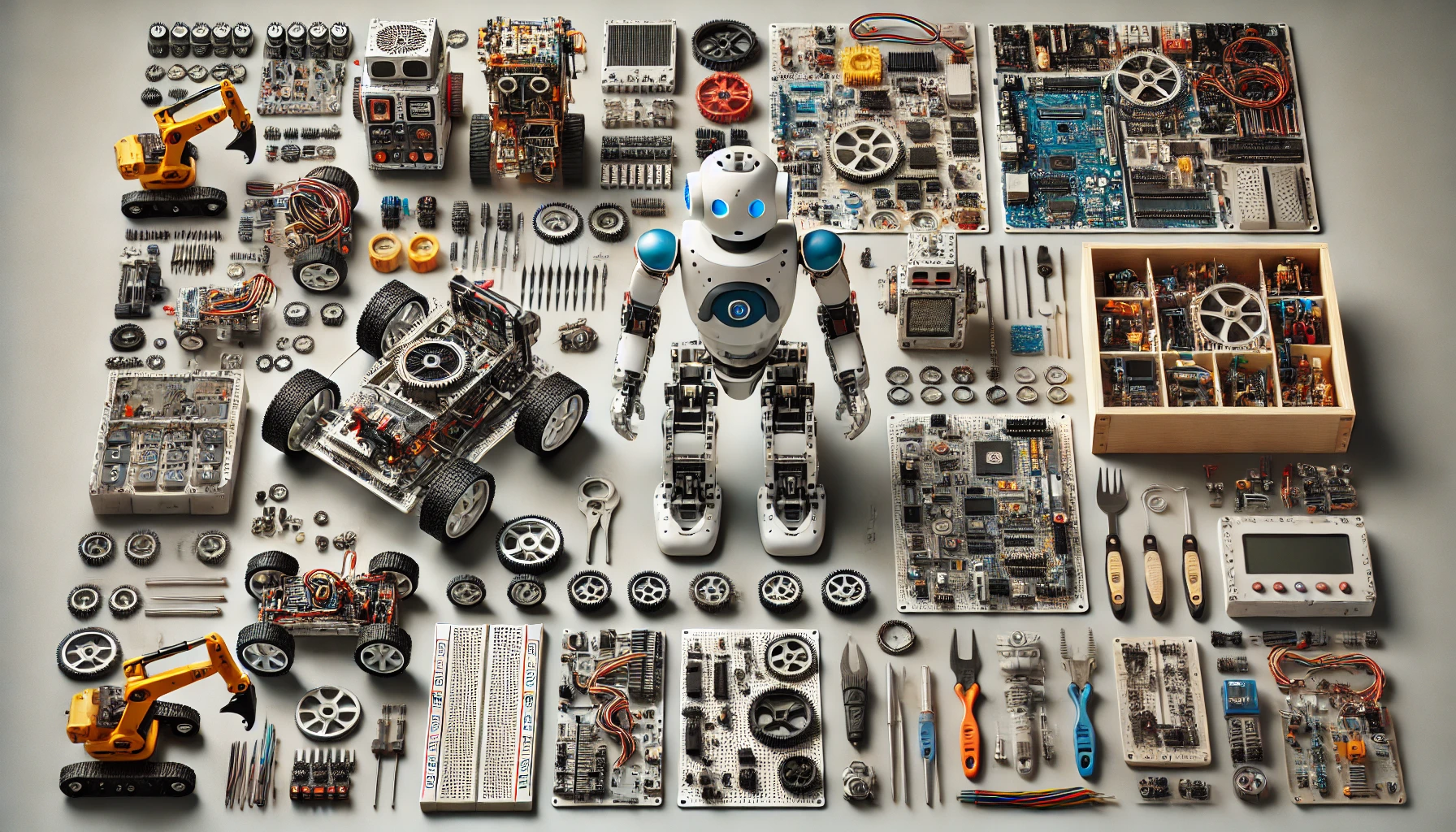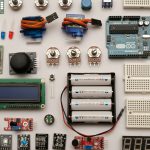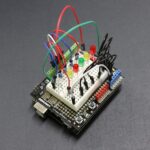
Introduction
Robotics kits are all-in-one learning solutions that have become increasingly popular as educational tools. These kits are particularly critical for those interested in STEM (Science, Technology, Engineering, and Mathematics). They provide a fantastic, hands-on approach to learning programming, electronics, artificial intelligence, and mechanical engineering for all ages. Moreover, this article explores the potential benefits and popular types and options of robotics kits available.
What are Robotics Kits? Definition and Uses
They are educational tools that contain various components, including motors, sensors, microcontrollers, and often programming software. However, these components can be assembled to create functional robots and perform various tasks. A robotics kit comes in a wide range of complexity levels, from beginner-friendly kits for children to advanced kits suitable for experienced hobbyists and professionals. Additionally, these kits are not limited to educational settings but have real-life applications in home automation systems, health sectors, and industries such as automotive and logistics.
The Educational Significance of Robotics and Robotics Kits
Robotics is no longer a futuristic concept—it has become a part of everyday life, from industrial automation to home assistants. Integrating robotics into education allows students to engage with real-world problems and challenges, giving them valuable experience in engineering and coding. In addition, educational kits provide a hands-on approach that enhances their understanding of complex concepts, making them an ideal learning solution in academic settings.
Benefits of Using Robotics Kits – The Future Learning Solution
They offer a fun and more engaging way to help learners develop valuable skills that benefit them throughout their lives. Some of the notable benefits include:
- Hands-On Learning: Offer a tangible and engaging way to learn about STEM concepts. By building and programming robots, individuals can apply theoretical knowledge to real-world scenarios.
- Problem-Solving and Critical Thinking: Robotics projects often involve troubleshooting, debugging, and overcoming challenges. Moreover, this helps develop problem-solving skills and fosters critical thinking abilities.
- Creativity and Innovation: Using these kits encourages creativity and innovation as users experiment with different designs, functions, and programming approaches. This can lead to the development of unique and innovative solutions.
- Teamwork and Collaboration: Many robotics projects involve teamwork, where individuals work together to achieve a common goal. This experience can enhance teamwork skills and foster a collaborative learning environment.
- Career Preparation: Robotics is a rapidly growing field with numerous career opportunities. Learning robotics through kits can provide a solid foundation for pursuing careers in engineering, computer science, artificial intelligence, and related fields.
Popular Types of Robotics Kits: Which One Is Right for You?
They come in various types based on the level of experience in robotics, fields, and age. The most common types of these kits include:
Beginner
These kits are designed for beginners—with little to no experience in robotics. They often include simple, easy-to-follow assembly instructions and pre-programmed functions that help novice learners get started quickly.
Intermediate
Intermediate kits require a basic knowledge of programming and mechanics and are designed for those with this foundational knowledge. However, they offer more complexity and the opportunity for customisation, allowing more creative freedom and technical growth.
Advanced
Advanced kits are for experienced users and professionals who are ready to tackle sophisticated projects. They feature high-level components and require a deeper understanding of programming and engineering principles.
Best Robotics Kits for Kids and Beginners
For beginners and kids, the following kits are the most user-friendly and widely recommended:
- LEGO Mindstorms – A LEGO Mindstorms kit is a versatile kit that allows children to build robots using high-quality LEGO bricks. Furthermore, it consists of a user-friendly interface that allows children to program bricks and create customised robots.
- VEX – VEX kits are often used in school competitions. They offer both mechanical and programmable components that help students grasp engineering principles.
- Sphero BOLT – This spherical robot is fun to control and program via a smartphone, making it a great introduction to basic coding.
Robotics Kits for Intermediate and Advanced Learners
For those with more experience in robotics, the following kits provide a more in-depth experience:
- Arduino Robotics Kits – Arduino kits offer a vast ecosystem of microcontrollers and accessories that allow intermediate users to experiment with more complex robot designs.
- Raspberry Pi Robotics Kits – Raspberry Pi kits integrate computing power with robotics, enabling advanced programming and greater functionality.
- Makeblock mBot – The Makeblock mBot is a modular robotics platform designed to teach both mechanical engineering and programming through an intuitive interface.
Conclusion: Robotics Kits as a Gateway to Future Careers
Robotics kits represent a dynamic, hands-on approach to learning that blends creativity, problem-solving, and technological skills. They are not just educational tools but stepping stones to future careers in STEM fields. From kids to professionals, a robotics kit offers a unique opportunity and interface to engage with technology in ways that are both fun and impactful.





















